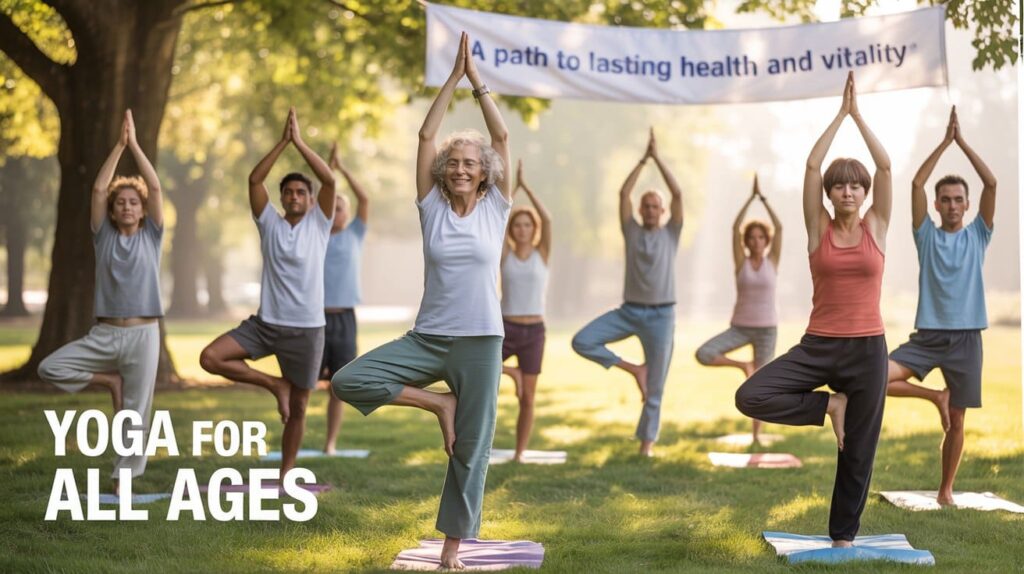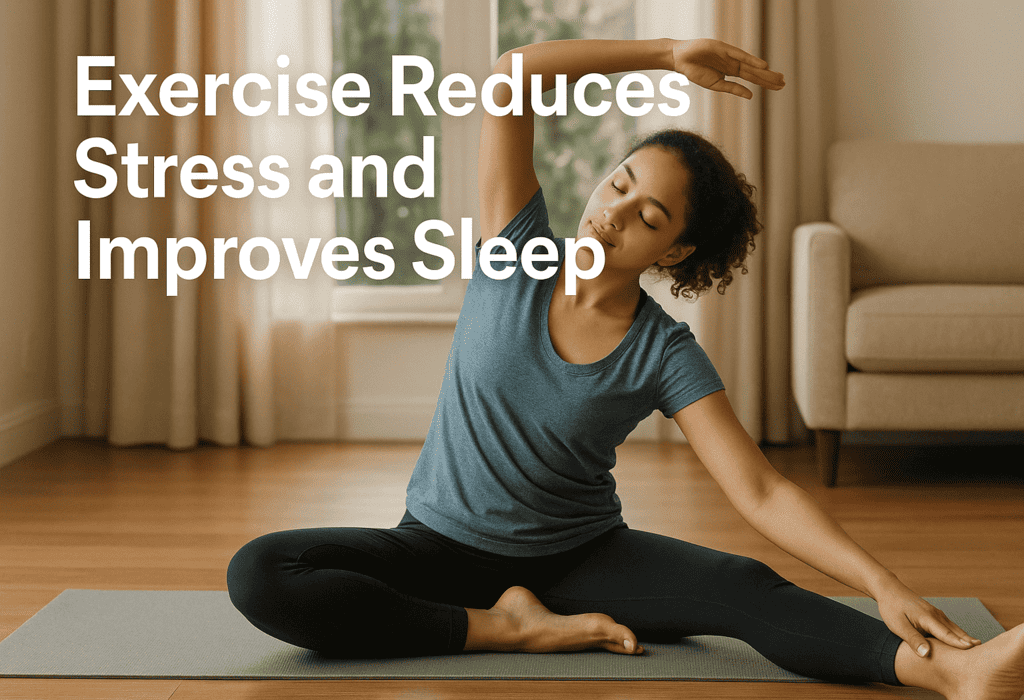
Introduction
Is yoga a sport—or something more? This question comes up often as people worldwide embrace yoga for fitness, stress relief, and overall well-being. Historically a spiritual and philosophical system from ancient India, modern yoga is practiced both as a contemplative discipline and as exercise that builds strength, flexibility, and balance. Today, an expanding body of scientific research from Asia, Europe, and North America examines yoga’s effects on mental health, cardiovascular risk, chronic pain, sleep, and quality of life. These studies show meaningful benefits when yoga is practiced consistently and safely. WikipédiaHarvard HealthPubMed
This article will: (1) define what yoga is and how it compares to traditional sports, (2) summarize evidence-based physical and mental health benefits, (3) present practical guidance for choosing a style and practising safely, and (4) list reputable studies and resources for further reading. Throughout, key SEO terms such as yoga, mental health, physical fitness, stress reduction, and yoga research are emphasized.
Key Points (at a glance)
- Yoga is a mind–body practice that combines postures (asanas), breath control (pranayama), and meditation. Wikipédia
- Scientific reviews show moderate evidence that yoga reduces depression and anxiety, and helps with chronic low-back pain and sleep. PubMed+1PMC
- Yoga can improve flexibility, strength, balance, and some cardiovascular risk markers when used as part of a healthy lifestyle. The Nutrition SourceHarvard Health
- Safety and qualified instruction matter—yoga has a low but nonzero injury risk, similar to other forms of exercise. TIME

Body
What is yoga—and how is it different from traditional sports?
Yoga originally referred to a broad set of spiritual, ethical, and meditative practices in South Asia. In contemporary settings, many people practice yoga primarily for its physical and mental health effects. Unlike many traditional sports that emphasize competition, speed, or maximal strength, yoga intentionally integrates three elements:
- Physical postures (asanas) — to develop flexibility, stability, and muscular endurance.
- Breath control (pranayama) — to regulate autonomic balance and reduce stress reactivity.
- Meditation and mindfulness — to cultivate attention, emotional regulation, and resilience.
Because of that integration, yoga is best characterized as a holistic mind-body practice rather than a single-dimension sport. This distinction is practical: some yoga styles are gentle and restorative, while others (e.g., Ashtanga or strong Vinyasa sequences) can be physically demanding and sport-like in intensity. Wikipédia+1
Evidence summary — what high-quality research shows
Below are representative findings from recent, influential research across continents.
- Depression and mood: A randomized controlled trial (RCT) of heated (Bikram-style) yoga published in the Journal of Clinical Psychiatry found significant reductions in depressive symptoms among adults with moderate-to-severe depression after an 8-week program. Other trials (e.g., Iyengar-based RCTs) have also shown improvements in depressive symptoms with regular practice. These trials suggest yoga can be an effective adjunct to standard care for mood disorders. PubMedHarvard Health
- Anxiety: Systematic reviews and meta-analyses led by European researchers show small to moderate short-term effects of yoga on anxiety compared with no treatment and some active comparators. Effects vary by study quality and intervention type. PubMed
- Chronic pain and low-back pain: Multiple RCTs and meta-analyses indicate yoga reduces pain and improves function for chronic low-back pain, with benefits comparable to other exercise therapies in many studies. Wikipédia Simple
- Sleep: Trials led by sleep researchers (including work by Sat Bir Singh Khalsa and colleagues) show yoga and mind–body practices can improve sleep quality and reduce insomnia symptoms when compared to sleep-hygiene controls or waitlists. PMCPubMed
- Cardiovascular and metabolic markers: When included as part of comprehensive lifestyle programs (diet, exercise, stress management), yoga has been linked to improved blood pressure, lipid profiles, and even regression of coronary atherosclerosis in long-term interventions (classic work by Dean Ornish and follow-ups). For modest single-component effects on isolated biomarkers, the evidence is positive but heterogeneous. PubMedThe Nutrition Source
These outcomes show that yoga’s clinical effects are best viewed as part of multimodal lifestyle strategies and that the strongest evidence currently supports mental-health and musculoskeletal benefits. PubMed+1

Practical table: matching yoga styles to common goals
| Goal | Suggested styles | Why |
|---|---|---|
| Stress reduction & sleep | Hatha, Yin, Restorative | Slow pace, breathwork, long holds aid relaxation. NCCIH |
| Strength & cardio fitness | Vinyasa, Ashtanga, Power yoga | Dynamic flows and repeated sequences build strength/endurance. The Nutrition Source |
| Pain management (low back) | Therapeutic yoga, Iyengar | Alignment focus and therapeutic modifications reduce strain. Wikipédia Simple |
| Flexibility & recovery | Yin, Restorative, Bikram* | Long holds and heat (Bikram) can increase tissue pliability (*heat needs medical clearance). Massachusetts General Hospital |
How often and how to practice safely
- Frequency: For general benefits, 2–3 sessions per week is a realistic baseline; many clinical programs for mental-health outcomes used 3–4 times per week or intensive 8–12 week protocols. PubMed+1
- Safety: Yoga is generally safe but not risk-free. Injury rates are low and comparable with other forms of exercise in large reviews; still, beginners should work with qualified instructors and use props/modifications. Consult a healthcare professional before starting if you have cardiovascular disease, uncontrolled hypertension, pregnancy, or severe musculoskeletal issues. TIMENCCIH
Mechanisms — why yoga works (simplified)
Research points to several plausible mechanisms:
- Autonomic regulation: Breathwork and slow movement shift autonomic balance toward parasympathetic (rest) responses, lowering heart rate and blood pressure. Harvard Health
- Anti-inflammatory effects: Some RCTs report changes in inflammatory biomarkers after yoga interventions, which may partly explain mood and pain benefits. ScienceDirect
- Neuroplasticity: Mindfulness and meditation elements of yoga are associated with changes in brain regions involved in attention, emotion regulation, and memory in neuroimaging and longitudinal studies. Indiatimes

Conclusion
So, is yoga a sport? The short answer: not exclusively. Yoga is a multifaceted mind–body practice that can function like a sport for those who choose intense styles, but it also offers therapeutic and meditative dimensions that go beyond typical sports definitions. Scientific evidence from Asia, Europe, and North America supports yoga’s role in reducing depression, anxiety, improving sleep, and relieving chronic low-back pain, while contributing to flexibility, strength, and some cardiovascular benefits when combined with healthy lifestyle changes. PubMed+2PubMed+2
If your goals are stress reduction or pain management, start with gentle Hatha, Yin, or therapeutic classes. If you seek fitness or athletic conditioning, consider Vinyasa, Power, or Ashtanga with appropriate progression. Above all, prioritise qualified instruction, gradual progression, and medical clearance when needed. With consistent practice, yoga can be a powerful, evidence-based tool for lifelong mental and physical health. NCCIHWikipédia Simple
Selected References & Further Reading
- Nyer MB, et al. A Randomized Controlled Trial of Community-Delivered Heated Hatha Yoga for Moderate-to-Severe Depression. Journal of Clinical Psychiatry. 2023. PubMedMassachusetts General Hospital
- Ornish D, Scherwitz L, et al. Intensive Lifestyle Changes for Reversal of Coronary Heart Disease. Lancet. 1998 (Landmark lifestyle-medicine trials). PubMed
- Cramer H, et al. Yoga for Depression: A Systematic Review and Meta-analysis. (and related anxiety meta-analyses). 2013; 2018. PubMed+1
- Khalsa SBS, Goldstein MR. Treatment of chronic primary sleep onset insomnia with Kundalini yoga: a randomized controlled trial. J Clin Sleep Med. 2021 (and earlier work). PMCPubMed
- National Center for Complementary and Integrative Health (NCCIH). Yoga for Health – Clinical Digest / Evidence summaries. U.S. NIH. NCCIH+1
- Harvard Health Publishing. Yoga — Benefits Beyond the Mat; Hot yoga and depression summaries. Harvard Medical School. 2023–2024. Harvard Health+1
- Wikipedia. Yoga; Yoga as exercise; Science of yoga. (Overview of history, definitions, and modern developments.) Wikipédia+1








